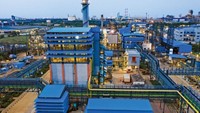Advertisement
Grab your lab coat. Let's get started
Welcome!
Welcome!
Create an account below to get 6 C&EN articles per month, receive newsletters and more - all free.
It seems this is your first time logging in online. Please enter the following information to continue.
As an ACS member you automatically get access to this site. All we need is few more details to create your reading experience.
Not you? Sign in with a different account.
Not you? Sign in with a different account.
ERROR 1
ERROR 1
ERROR 2
ERROR 2
ERROR 2
ERROR 2
ERROR 2
Password and Confirm password must match.
If you have an ACS member number, please enter it here so we can link this account to your membership. (optional)
ERROR 2
ACS values your privacy. By submitting your information, you are gaining access to C&EN and subscribing to our weekly newsletter. We use the information you provide to make your reading experience better, and we will never sell your data to third party members.
Business
Caveats Temper India’s Promise
Chemical market grows strongly, but country remains a difficult place to do business
by Jean-François Tremblay
May 9, 2011
| A version of this story appeared in
Volume 89, Issue 19

On the back of a surging economy, the Indian market for chemicals will enjoy tremendous growth for years to come, according to speakers at the Business Outlook Conference held last month in Mumbai. But unless infrastructure improves and government support for the industry strengthens, chemical producers in India will not benefit fully from the buoyancy of the country’s market.
India has come a long way economically in the past 20 years. According to the International Monetary Fund, in 2010 India’s economy actually grew faster than China’s for the first time in 30 years. Such strong growth translates into vast opportunities for suppliers of chemicals.
“We are on the cusp of fantastic growth in the Indian chemical industry,” said Ravi Raghavan, editor and publisher of the Indian magazine Chemical Weekly, which organized the conference. “This industry, now worth $80 billion annually, could grow to $200 billion in annual sales [by 2020] if outstanding issues like infrastructure, water, raw materials, and power are properly addressed.”

Craig A. Rogerson, chief executive officer of the U.S. specialty chemical maker Chemtura, pointed out that several segments of the Indian chemical market match his company’s portfolio. The country produces most of its electricity in coal-fired power plants, he noted, which will eventually require Chemtura bromine derivatives for mercury removal. “India is second behind China in coal emissions, and this will be a huge opportunity for us as standards are tightened,” Rogerson said. India also offers substantial opportunities for Chemtura in flame retardants and agrochemicals, he added.
For some companies, India is an attractive market both in its own right and as a base from which to serve other markets. Alok Kumar Bhadra, managing director of Nalco India, said the water treatment company has invested $25 million in a global R&D center in Pune, a city near Mumbai, to serve customers in the energy industry. “It’s staffed by many people who relocated from the U.S.,” he said. And it monitors water treatment facilities of Nalco customers throughout the world, performing the work of a similar unit previously located in Chicago, he explained.
India is particularly well positioned to become a significant supplier of specialty chemicals, said Saikiran Krishnamurthy, a partner at the management consultancy McKinsey & Co. The Indian specialty chemical industry could increase sales five times in the coming decade to $100 billion, he predicted.
“Automotives, construction chemicals, personal care, consumer electronics—are all growing very fast and will continue to do so for decades,” Krishnamurthy said. “The future is rosy in India in the specialty chemical markets.”
Specialty chemical suppliers will benefit from several new regulatory requirements, Krishnamurthy pointed out. In the automotive sector, stricter emissions standards will be implemented, he said. In construction, builders have been required since 2007 to adhere to energy conservation guidelines. The water treatment industry has come under pressure to recycle rather than simply treat wastewater. And manufacturers of paints and coatings face tougher limits for volatile organic compounds and demands to phase out lead-containing products, he noted.
The country’s market is not the only reason India is attractive to producers of specialty chemicals. India also has an abundance of educated workers for the labor-intensive sector. But the path ahead will not be easy, Krishnamurthy cautioned, until the country builds chemical industry parks that can supply the infrastructure and raw materials the specialty chemical industry needs.
In a presentation critical of India’s business environment, Joerg Strassburger, Lanxess’ managing director in India, noted that the German specialty chemical company has invested $90 million in a manufacturing facility in Jhagadia, in the northwest state of Gujarat. “We could have invested more in India, but it makes no sense to proceed until the problems are fixed,” he said.
The Indian market is appealing, Strassburger acknowledged. For instance, he noted, the Indian tire market increases by almost 25% annually. Agrochemicals have great potential because of India’s expanding food needs. And Indian pharmaceutical exports are growing strongly.

But it’s difficult to set up a manufacturing facility in India that can compete against plants in other countries. “Lanxess needs facilities that are globally competitive,” Strassburger said. Feedstocks in India are generally expensive, and obtaining a stable supply of fuel such as natural gas can be problematic, he said. Moreover, the roads are so unsafe that using them to ship chemicals is risky. “India is, we believe, the least competitive place in Asia in terms of logistics,” he said.
Dealing with the Indian government is a particular headache, Strassburger continued. Government officials make promises to investors but have trouble delivering on them because of a “lack of coordination and common purpose by different agencies.” And although the government supports the establishment of industrial parks to address the infrastructure deficiencies industry complains about, “it’s moving too slowly,” Strassburger added.
Addressing the audience after Strassburger, Chemtura’s Rogerson observed that his company seems to struggle less with India than Lanxess does because Chemtura sees India mainly as a place to manufacture for the local market. “We’ve never considered setting up manufacturing facilities for exports from here,” he said.
The Chemical Weekly conference immediately preceded Chemspec India, a trade fair for specialty and fine chemicals producers. James G. Keay, business director of U.S.-based Vertellus Specialty Chemicals, said it was his second year at Chemspec India. The company’s Vitride reducing agent, primarily used as a substitute for the pyrophoric reagent lithium aluminum hydride, is enjoying strong demand from Indian producers of generic pharmaceuticals. “India seems like a good place to spend our time and money,” he said.





Join the conversation
Contact the reporter
Submit a Letter to the Editor for publication
Engage with us on Twitter